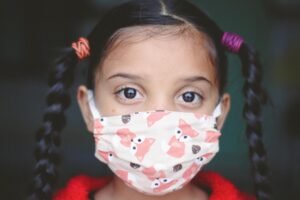In recent weeks, a concerning surge in reported cases of respiratory illnesses has outbreak in China, sparking heightened worries and inquiries regarding the nature and potential implications of this outbreak in China. This comprehensive overview aims to delve into key aspects, shedding light on the current situation and addressing pertinent questions.
1. What’s Happening?
The surge in respiratory illnesses, first brought to attention on November 13 by China’s National Health Commission, has manifested as a critical health concern. Hospitalizations have spiked, and the World Health Organization (WHO) has actively sought more information. A specific focus has been placed on clusters of undiagnosed pneumonia in children, adding a layer of complexity to the unfolding scenario.
2. Where is the Spike Occurring?
The geographical concentration of infections primarily centers on China’s northeastern regions, with major urban centers like Beijing and Liaoning experiencing heightened instances. The strain on healthcare facilities is evident, with some hospitals witnessing a substantial influx of patients, exemplified by reports of up to 1,200 daily emergency room entries.
3. Who is Most Affected?
Children emerge as the most affected demographic, with a disproportionate number requiring medical attention. This trend has resulted in increased absenteeism in schools, signaling potential disruptions to educational institutions. While there is speculation about immunity in older individuals, the vulnerability of certain groups, such as the elderly and pregnant women, cannot be overlooked.

4. Is this a New Disease, Similar to Covid-19?
Contrary to the emergence of a novel disease akin to Covid-19, current evidence points towards the circulation of known pathogens. Influenza, mycoplasma pneumoniae, respiratory syncytial virus (RSV), and SARS-CoV-2 (COVID-19) have been identified. The WHO has called for additional data, with a particular emphasis on mycoplasma pneumoniae, a prevalent infection among patients under 18.
5. Why Now?
The temporal connection between the outbreak, the relaxation of COVID-19 restrictions, and the onset of winter is noteworthy. Chinese authorities attribute the surge to a potential “immunity debt” resulting from stringent lockdowns. Reduced exposure to respiratory bugs during lockdowns may have compromised general immunity, contributing to the current spike. Cold temperatures further amplify the spread of respiratory illnesses.
6. How Are Authorities Responding?
In response to the escalating situation, Chinese authorities have opted for a strategic approach, avoiding full-blown lockdowns but emphasizing increased vigilance and precautionary measures. The WHO, aligning with global best practices, recommends a range of preventive measures, including maintaining distance, staying home when ill, testing, mask-wearing, ventilation, and regular handwashing.
7. Public Response in China:
Despite the looming health concerns, a significant portion of the Chinese population remains optimistic about the trajectory of the outbreak. Many individuals, particularly parents, view the situation as a matter of protection rather than an imminent threat. This optimism may be rooted in the belief that proactive measures will contribute to a swift resolution.
8. Will Things Improve Soon?
Projections by authorities suggest a peak in influenza during the winter and spring seasons, with mycoplasma pneumoniae expected to remain prevalent in specific regions. An additional concern is the potential resurgence of COVID-19 infections, prompting a call for reinforced reporting processes. The complexities of managing multiple respiratory infections simultaneously present a considerable challenge to health systems.

9. Should the US/World Be Worried?
The immediate worry for the US and the broader global community is addressed through an assessment of the current containment efforts. Despite the absence of a complete lockdown, China has intensified testing and surveillance, reflecting a proactive stance. Drawing on the lessons learned from the previous global pandemic, authorities are likely to exercise heightened caution in managing and mitigating the outbreak.
Furthermore, even in the event of the outbreak extending beyond China’s borders, global preparedness has significantly improved since the initial stages of the COVID-19 pandemic. Vaccines and medications are anticipated to be readily available to combat the outbreak, offering a level of reassurance. Notably, specific treatments, such as the use of Azithromycin for mycoplasma pneumonia, exemplify the medical advancements that can be leveraged to address respiratory infections.
The transformative impact of the global pandemic experienced in 2019-20 continues to shape perceptions and responses to emerging health crises. While concerns about the possibility of a ‘next Covid-19’ persist, the global community is better positioned today to confront infectious diseases due to the invaluable experience gained during the previous pandemic. The continued evolution of public health strategies, advancements in medical science, and international collaboration collectively contribute to a more resilient global health landscape.
In conclusion, the respiratory illness outbreak in China necessitates a comprehensive understanding of its multifaceted dimensions, ranging from its origins and geographical impact to its effects on vulnerable populations and global implications. This detailed overview seeks to provide insights into the complexities of the situation, fostering informed discussions and actions in the face of an evolving public health challenge.

